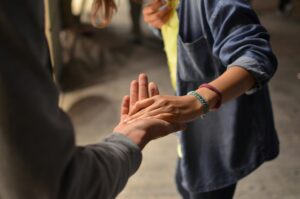By Dr Michelle Garnett and Prof Tony Attwood
The list of conditions that can co-occur with when a person is autistic is long and can initially appear daunting. In our own clinical practice, we find that it is rare to meet an autistic person who does not have a co-occurring condition that needs treatment, for e.g. attention deficit hyperactivity disorder (ADHD), an anxiety and/or mood disorder, insomnia, a learning or speech disorder, an eating or addictive disorder etc. To be clear, as clinical psychologists we do not treat autism. However, we do treat the psychological sequelae of living in a community that in too many instances does not understand autism. We also treat conditions that tend to occur with autism due to genetics or epigenetics, where there is a genetic propensity for the condition and environmental trigger/s for its onset.
Fairness
A concept that is very important to many autistic individuals, along with social justice, is fairness. The long list of conditions that can occur with autism has absolutely nothing to do with fairness. If fairness came into it, whoever decided this would no doubt consider that autism alone would present enough challenges, for e.g. being different in a community that largely does not understand or accommodate autism, sensory challenges that can be painful and cause hypervigilance on a daily basis, executive function struggles. While the ‘not fair’ outlook is accurate, and a common initial reaction to receiving a diagnosis or two or several beyond autism, staying with this thought is not advisable since it tends to lead to a sense of victimization and disempowerment, however true it is!
In our clinical work, as we explore the strengths and challenges for autistic individuals in their understanding of the authentic self, it is most often the case that the list of strengths far outweighs the list of challenges. In other words, being autistic brings gifts as well as challenges, and the fortitude, inner strength, tenacity, and perseverance that tend to be part of being autistic can equip them to face their challenges.
Being autistic and having other diagnoses has nothing to do with fairness, but everything to do with neurology and genes. For e.g. we know that anxiety, mood and autoimmune disorders are genetically linked to autism. We also know that there is under-connectivity in the neural networks of the frontal lobes in the brains of autistic individuals and those with ADHD and sensory processing disorder. Differently functioning frontal lobes is a likely explanation for these common co-occurring conditions.
Being autistic and facing co-occurring conditions
Our own advice about having co-occurring conditions is to face the problem as if you were a scientist, that is, dispassionately and with curiosity. Accept that your first response is likely to be emotional, that is there may be a sense of outrage, stress, anxiety and/or grief. Accept and allow this emotion. Offer yourself compassion for your situation. Seek support from others who care about you. If necessary, seek professional support from a psychologist or counselor. Use the wisdom available in many superb publications (c.f. below list of resources) to deal with your anger, anxiety, and grief. Then allow yourself a second response, the scientific response.
Consider each label as a signpost pointing you in the direction of gaining more knowledge and wisdom about the mind and body you inhabit. Research each condition, consult specialists. Beware of quackery; it is bountiful in the field of autism. Use your hard-won knowledge and wisdom to empower you to treat your mind and body in ways that give you the energy, equanimity, and good health you need to fulfill your life goals.
An identity based on disorder
Unfortunately, too many autistic teenagers and adults have collected many mental health labels prior to being accurately diagnosed autistic. These labels may or may not still be accurate and some may need to be removed. Common labels we see include, but are not limited to, major depressive disorder, bipolar disorder, borderline personality disorder, narcissistic disorder, dissociative disorder, schizotypal disorder, social anxiety, generalized anxiety disorder, obsessive-compulsive disorder, etc. An unfortunate consequence of this experience may have been to align with psychopathology in the past, and to interpret oneself only in the context of disability, disorder, and dysfunction.
When we meet a person who has received a long list of psychiatric labels it can be a “red flag” for confusion and lack of understanding of autism by health professionals, not dysfunction and psychopathology in the person. Aligning with psychopathology can seem attractive to a teenager who is confused about who they are. They may suffer from paralysing anxiety and a sense of being overwhelmed when engaging with the world, often leading to long periods of avoidance of engagement, including school and social contact. Avoidance is reinforced by the consequent relief from anxiety and negative tension in the short-term but leads to increased anxiety and often the emergence of a major depressive disorder in the long-term.
When debilitating anxiety and/or depression is present we highly recommend psychological sessions to treat these conditions and, once treated, to explore the person’s sense of self in terms of their qualities, abilities, values, and interests. The overall goal of therapy is self-acceptance to allow the person to design a life that suits their authentic sense of self.
An autistic model of happiness
It takes great courage to be different, including acceptance of being different. The pathway for an autistic person is unlikely to be conventional, especially when that person has other diagnoses. The autistic model of happiness is very likely to be a different model of happiness than that of a non-autistic person. For e.g. the happiness of being with animals may far outweigh the person’s happiness of being with people, but that happiness is just as valid, and just as needing fulfillment. Molly, an autistic teenage girl who attended one of our group programmes for depression described that the moment of greatest happiness in her own life was when she came face-to-face with a much-revered extinct lizard at the Australian Museum. She spoke with utter jubilation about her experience.
Where to from here?
We’ve created online presentations on the experiences of being autistic as a female* including the understanding and treatment of conditions that can be present for an autistic individual. We designed the course for parents, carers, professionals and autistic teenagers and women themselves.
For more information about autistic children and teenagers who have anxiety, depression or anger, we can recommend our our online course:
Our brand-new event, Autistic Adults, is designed for autistic adults themselves, and those who love them, and includes the latest research and our own clinical wisdom what can be helpful to know and do.
^This blog is a revised excerpt from a chapter section written by Michelle Garnett, for the book, Spectrum Women: Marching to the Beat of Autism (see Resource list below for the full reference).
*NB: Wherever the female gender is referred to in this article we are referring to the gender assigned at birth, rather than the gender identified with which may be different.
Resources
^Spectrum Women: Walking to the Beat of Autism edited by Barb Cook and Michelle Garnett, published by Jessica Kingsley Publishers, Web: www.jkp.com
Been There. Done That. Try This! An Aspie’s Guide to Life on Earth, edited by Tony Attwood, Craig Evans and Anita Lesko, published by Jessica Kingsley Publishers, Web: www.jkp.com
Overcoming Anxiety and Depression on the Autism Spectrum: A Self-Help Guide Using CBT by Lee A. Wilkinson, published by Jessica Kingsley Publishers, Web: www.jkp.com
Asperger Syndrome and Anxiety: A Guide to Successful Stress Management by Nick Dubin, published by Jessica Kingsley Publishers, Web: www.jkp.com
The Autism Spectrum and Depression by Nick Dubin, published by Jessica Kingsley Publishers, Web: www.jkp.com
Exploring Depression, and Beating the Blues: A CBT Self-Help Guide to Understanding and Coping with Depression in Asperger’s Syndrome [ASD-Level 1] by Tony Attwood and Michelle Garnett, published by Jessica Kingsley Publishers, Web: www.jkp.com
A Guide to Mental Health Issues in Girls and Young Women on the Autism Spectrum by Dr Judy Eaton, published by Jessica Kingsley Publishers, Web: www.jkp.com
60 Social Situations and Discussion Starters to Help Teens on the Autism Spectrum Deal with Friendships, Feelings, Conflict and More: Seeing the Big Picture by Lisa A. Timms, published by Jessica Kingsley Publishers, Web: www.jkp.com




